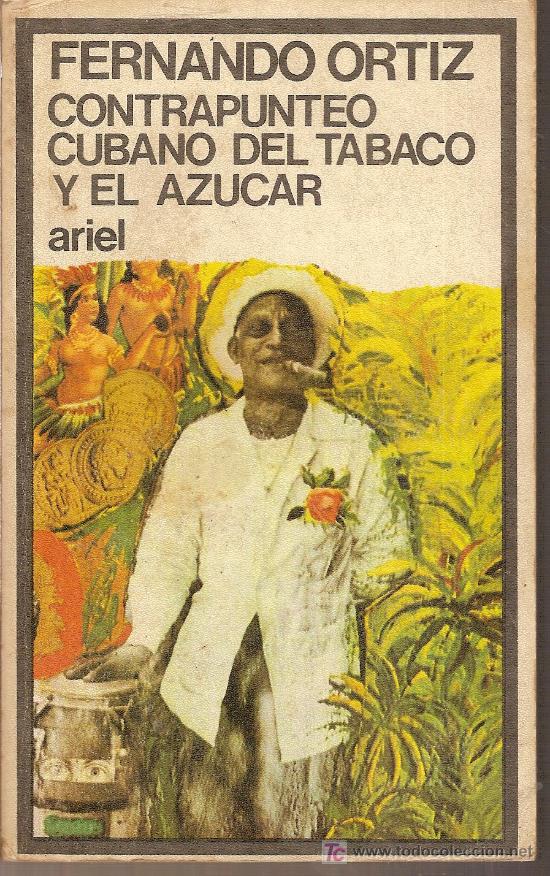4.4.2.7 “Cuban Counterpoint between Tobacco and Sugar”, 1940, by Fernando Ortiz (1881 – 1969)

“Cuban Counterpoint between Tobacco and Sugar” is perhaps Fernando Ortiz’s most important work, in which he addresses national history from a political and economic perspective, through these fundamental products but also appealing to their symbolic qualities and with a narrative structure of literary chiseling.
Ortiz addresses the significance of tobacco and cigar makers in the struggle for national independence, as well as the capitalist exploitation of this industry based on Cuban crops. Sugar, for its part, is viewed from the perspective of the foreign penetration it has always represented; as a literary transmutation, it is personified and attributed characteristics of submission, in contrast to tobacco:
“In sugar there is no rebellion or defiance, no unsatisfied resentment, no brooding suspicion, but humble, quiet, tranquil, and calm enjoyment. Tobacco is dreamy and individualistic audacity to the point of anarchy. Sugar is pragmatic and socially integrative prudence. Tobacco is bold as a blasphemy, sugar is humble as a prayer. The trickster Don Juan must have smoked cigars, and the nun Doña Inés must have sucked on sugar candies. Fausto, the wise nonconformist, would also have savored his pipe, and Margarita, the sweet devotee, her sugared almonds.”
It has been said that the text anticipates the structuralism that emerged more than a decade later in France, due to the way it approaches its object of study and the linguistic studies that correlate with it. However, Ortiz does not abandon the positivist roots of his perspective, although it is nourished by a certain theoretical syncretism.
In this text is where Fernando Ortiz specifies the meaning and the word transculturation, which best expresses the transposition of one culture to another, not acculturation in the sense of annulment of one’s own and full assumption of the elements of the environment but a process in which some elements of identity are left aside to assimilate others, continuity and rupture, which expresses is in the hybrid base of the national culture.
In the concept and throughout the work, Ortiz emphasizes the truly cultural elements of the integration of the Cuban, simultaneously one and diverse. In this sense, ethnicity becomes secondary, a mere color that only implies a visual fusion. But more than difference, diversity is of a different kind, and without nullifying it, the connecting vessels of all that is Cuban are already established.








